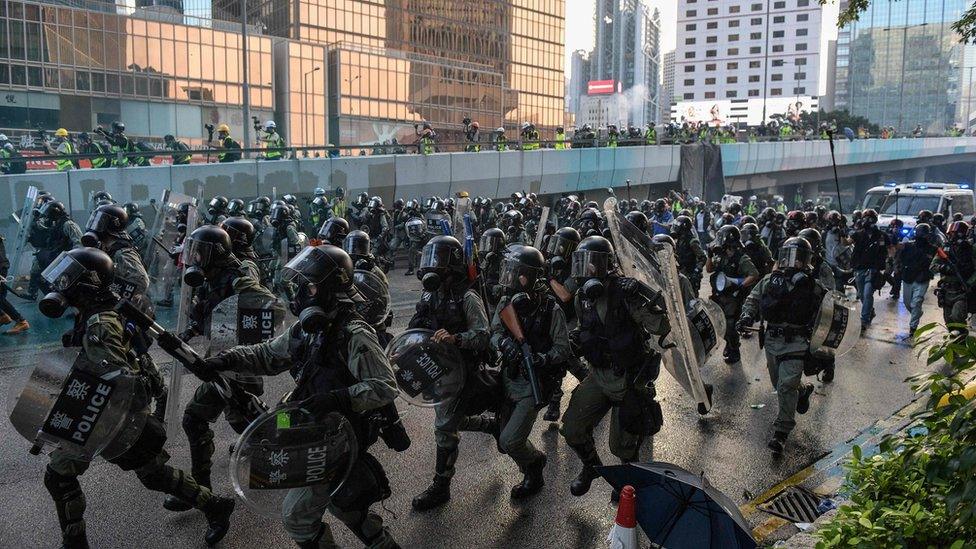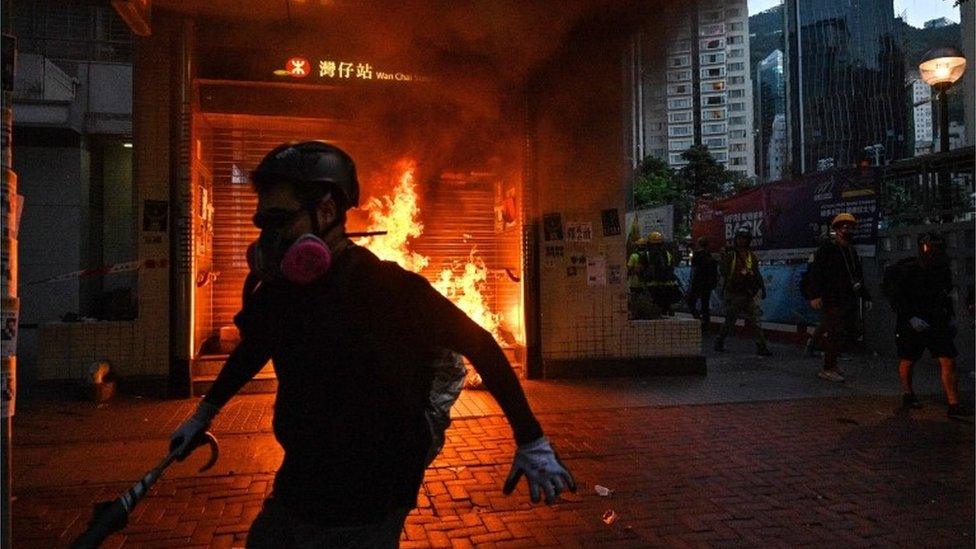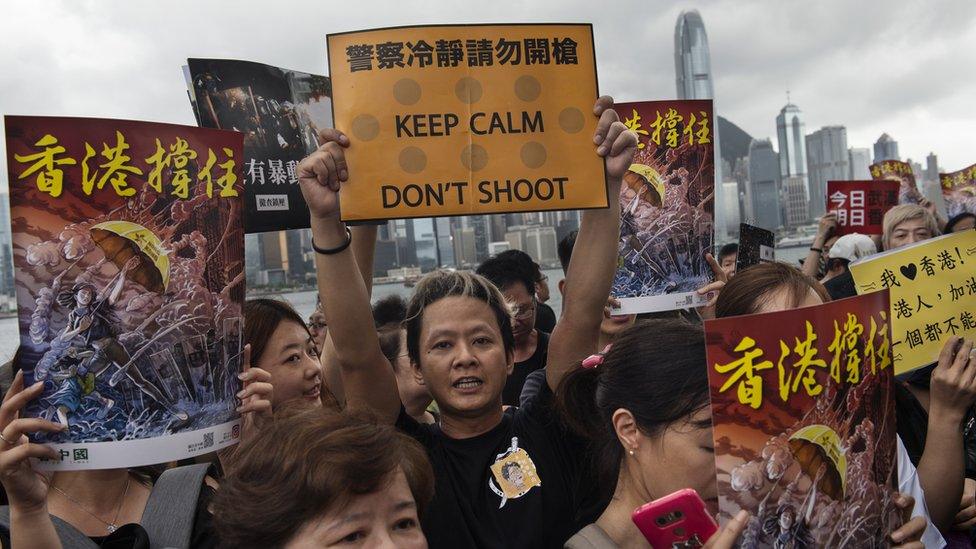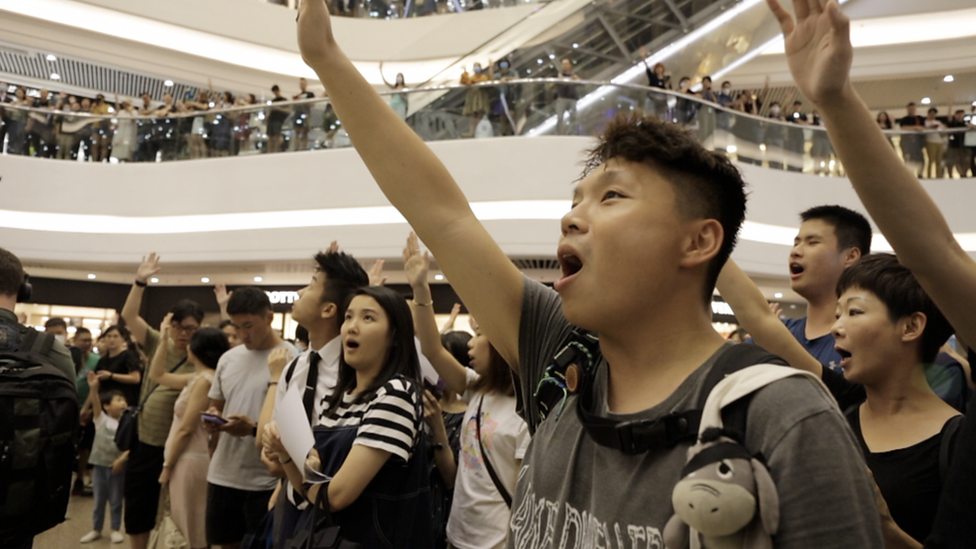Hong Kong protests: Petrol bombs and water cannon used in clashes
- Published
Jets of blue-coloured water hit protesters
Police in Hong Kong have used water cannon and tear gas against protesters throwing petrol bombs and bricks near government offices in the city.
The violence broke out after thousands of pro-democracy demonstrators marched, despite being denied a police permit.
Scuffles also broke out later between rival protesters around the city.
Earlier hundreds rallied outside the British Consulate, demanding the UK press China to maintain freedoms guaranteed during the 1997 handover.
The months of unrest were sparked by a proposed extradition bill, which would have made it possible for people in Hong Kong to be extradited to mainland China. Critics said they could have faced human rights abuses.

Some protesters threw petrol bombs
The bill was at first shelved, then the government announced it would withdraw it completely, but that has failed to stem protester anger.
They are calling for full democracy and an investigation into allegations of police brutality, among other demands.
What happened in the clashes?
Police had denied a permit for the march on Sunday, but thousands of people attended anyway, marching from Causeway Bay and Central, the main business and commercial district.

Protesters used umbrellas - symbols of the 2014 wave of protests - to protect themselves against water cannon
For the second week running, some marchers carried the US Stars and Stripes flag and called for President Donald Trump to "liberate" Hong Kong.
Some protesters also congregated outside the British consulate.
As the rally dispersed, hardcore protesters clashed with police in the streets around the parliament and government offices, throwing firebombs and projectiles.

One of the water cannon trucks was firebombed
Reports say some protesters threw bricks at police outside a Chinese military base in the city centre. They also set fire to a banner proclaiming the upcoming 70th anniversary of the founding of the People's Republic of China, Reuters news agency reported.
Police deployed tear gas and water cannon to break up the crowds. One was firing blue jets of water, which have been used elsewhere in the world to identify protesters later.
One water cannon briefly caught fire after being firebombed.
The entrances to several stations on the underground rail network, the MTR, were barricaded and fires were started at the entrance to Wan Chai station, a major transport hub.

Police cleared protesters from the government area

One of the entrances to Wan Chai metro station was set ablaze
There were also smaller outbreaks of violence in the North Point area of the city later in the night, as anti-government protesters dressed in black clashed with individuals wearing white, which has come to be associated with pro-Beijing groups.
Several people were injured throughout the night. Local media reported that some journalists had also come under attack. , external
Why was there a protest at the UK consulate?
While Hong Kong is part of China, the "one country two systems" arrangement gives it a high degree of autonomy and protects rights such as freedom of assembly and freedom of speech.
Glory to Hong Kong: Singing the city's new protest anthem
But the protesters outside the British Consulate shouted "One country, two systems is dead" and "Free Hong Kong".
"It was promised that Hong Kong people would enjoy basic human rights and such protection," one demonstrator told the BBC.
"We believe that the UK government has the legal rights and moral obligation to protect Hong Kong people," he added.
Hong Kong protesters sing God Save the Queen
China insists it is committed to the arrangement.
The protesters have also been calling on President Trump to intervene with China on their behalf, and urging the US Congress to pass a proposed bill backing human rights and democracy in Hong Kong.
- Published28 November 2019

- Published14 September 2019

- Published21 May 2020
